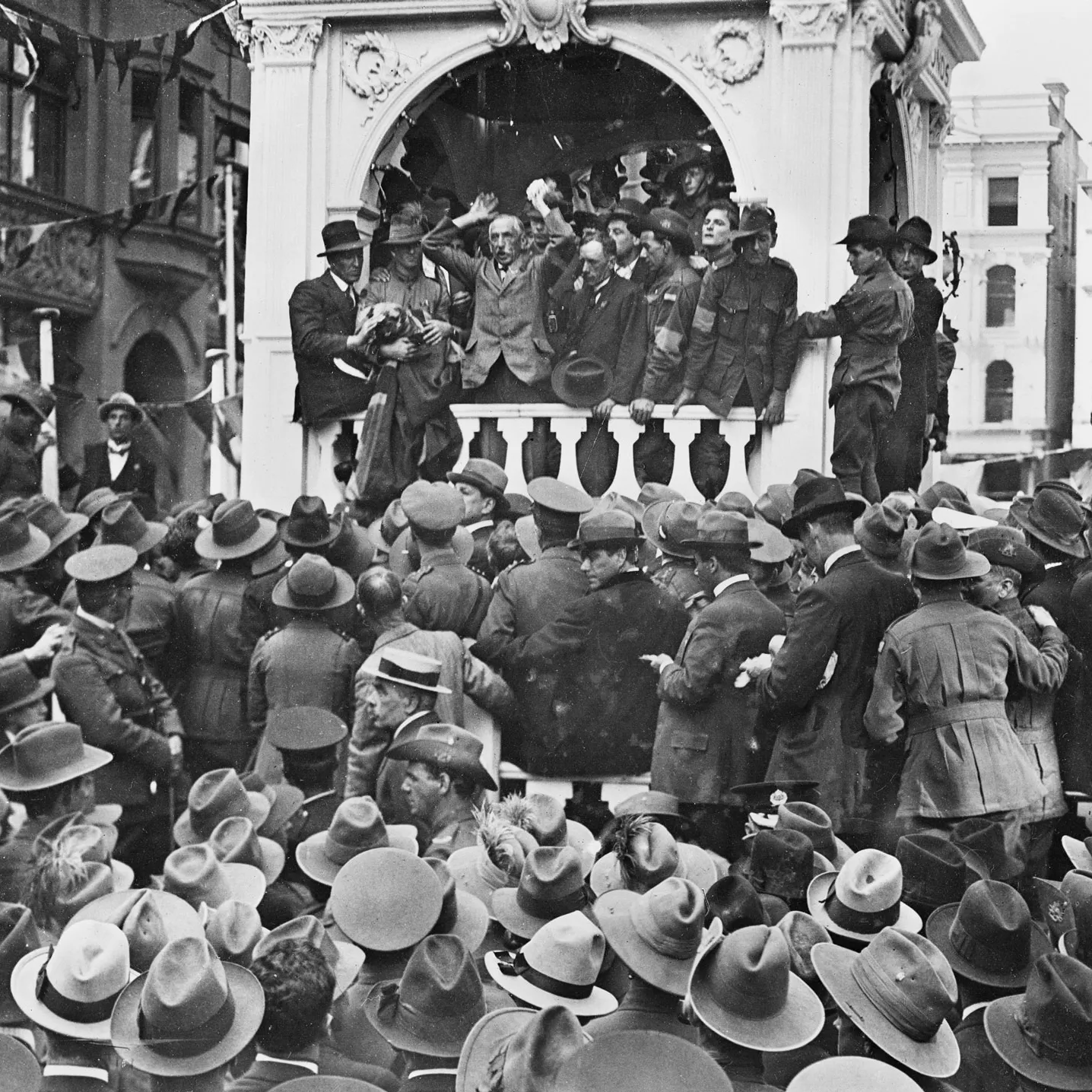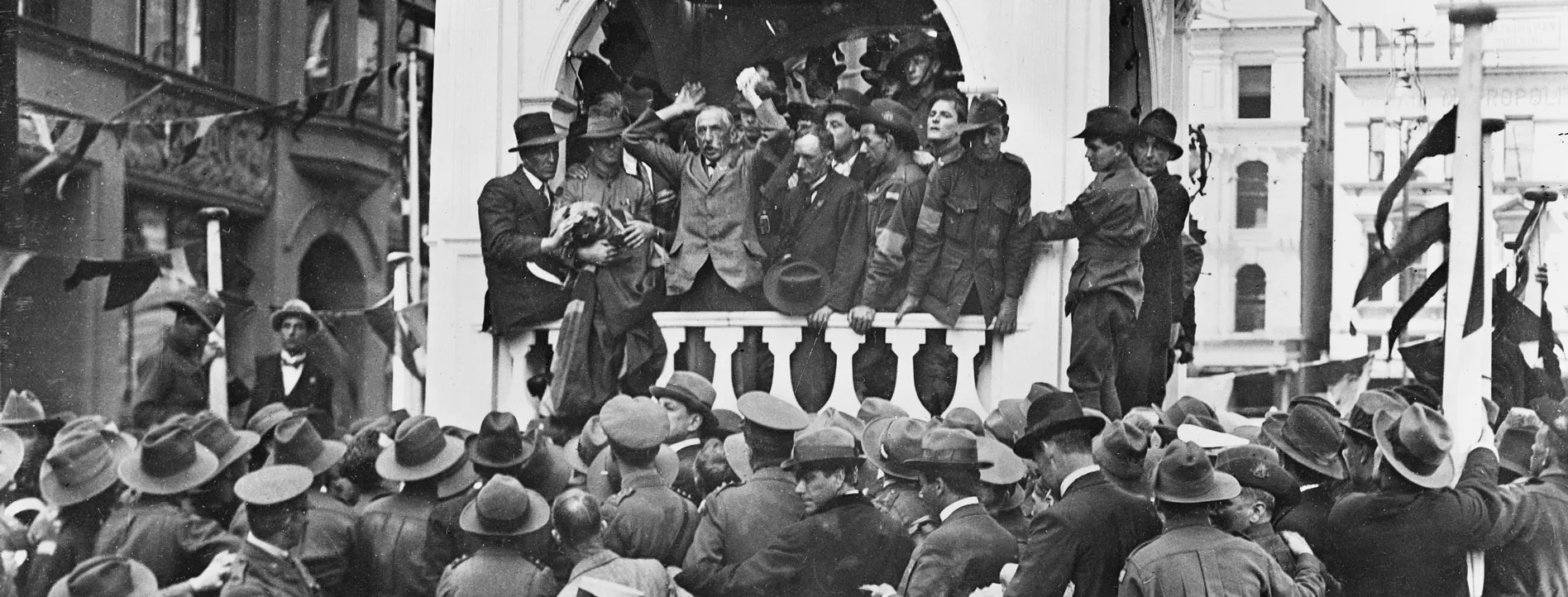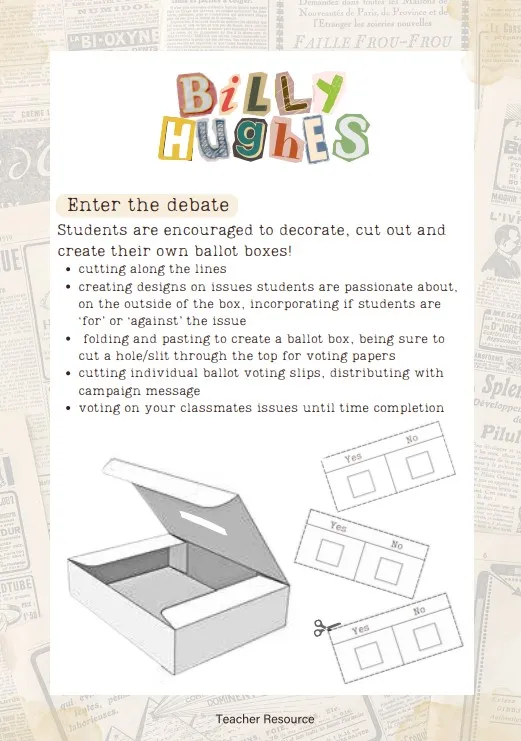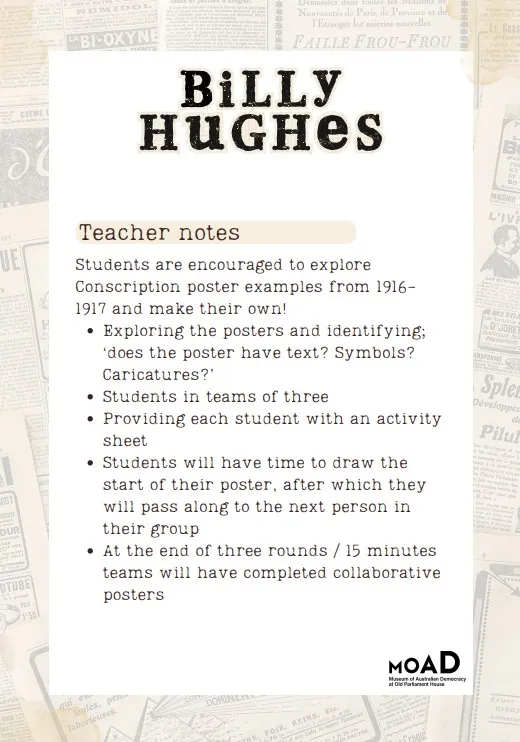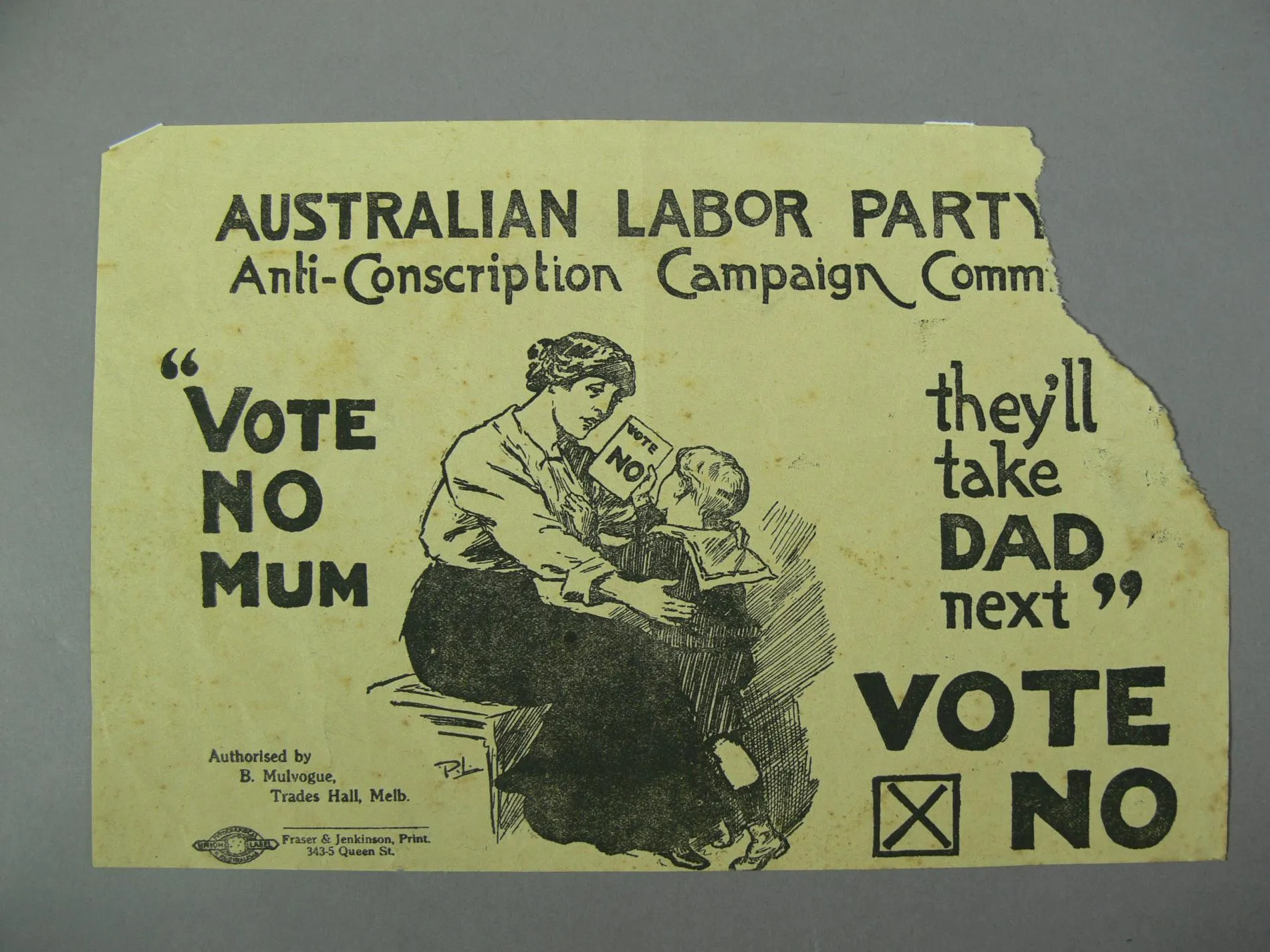Conscription during the First World War
Explore the debate with political cartoons, audio and activities.
During the First World War the issue of conscription sparked fierce debate across Australia.
What is conscription?
Conscription is compulsory enlistment in the armed forces. This means that if you are conscripted you have no choice but to join the armed forces.
The conscription debate
In the first few months of the First World War many Australians enlisted to fight. The number of men who volunteered was greater than needed and at first some were turned away. News of casualties began to reach home and support for the war declined sharply. It became more difficult to persuade men to sign up. Recruitment campaigns became more intense. Posters and speeches targeted men 'eligible' to enlist. Many eligible men over the age of 21 who hadn't enlisted were labelled 'shirkers' and 'traitors'.
After heavy casualties on the Western Front, Britain pressured Australia to make a bigger contribution to the war effort. In 1916, Hughes visited Britain and the war front. He returned to Australia convinced that conscription must be introduced to win the war. At that time, Australia had compulsory military service but conscripted men could only serve within Australian territory. Hughes wanted to extend conscription so that men could be sent to reinforce the front line in Europe.
The Federal Parliament has the power to introduce conscription with a majority vote in the House of Representatives and the Senate. However the Labor Party, led by Hughes, had a policy against conscription and a majority of senators were also against the introduction of conscription. To get support for conscription Hughes decided to ask the people's opinion in a national referendum.
- Billy Hughes, circa 1916
What is a referendum?
In a referendum people are asked to vote directly on an issue. In Australia today the word 'referendum' refers specifically to a vote to change the Australian Constitution. The 1916 and 1917 votes were technically plebiscites or opinion polls, but in the historical documentation these votes were referred to as referendums. In both 1916 and 1917, the majority of people voted 'no' and the referendums were defeated.
Political cartoons, audio and activities workbook
Delve into the debate using the resources below.
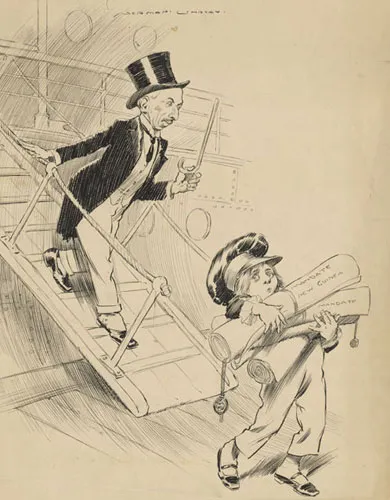
Billy Hughes political cartoons
Examine four political cartoons about Billy Hughes and his decisions as prime minister during the First World War.

Conscription debate
Are you for or against conscription? Hear arguments from both sides of the debate.
Image credit: State Library of South Australia, b2164581

